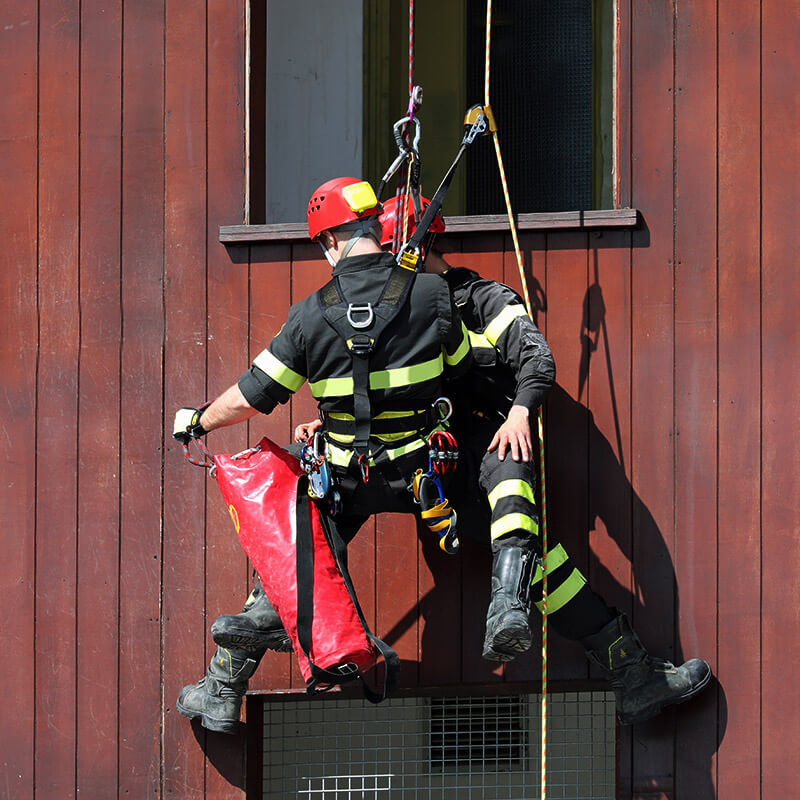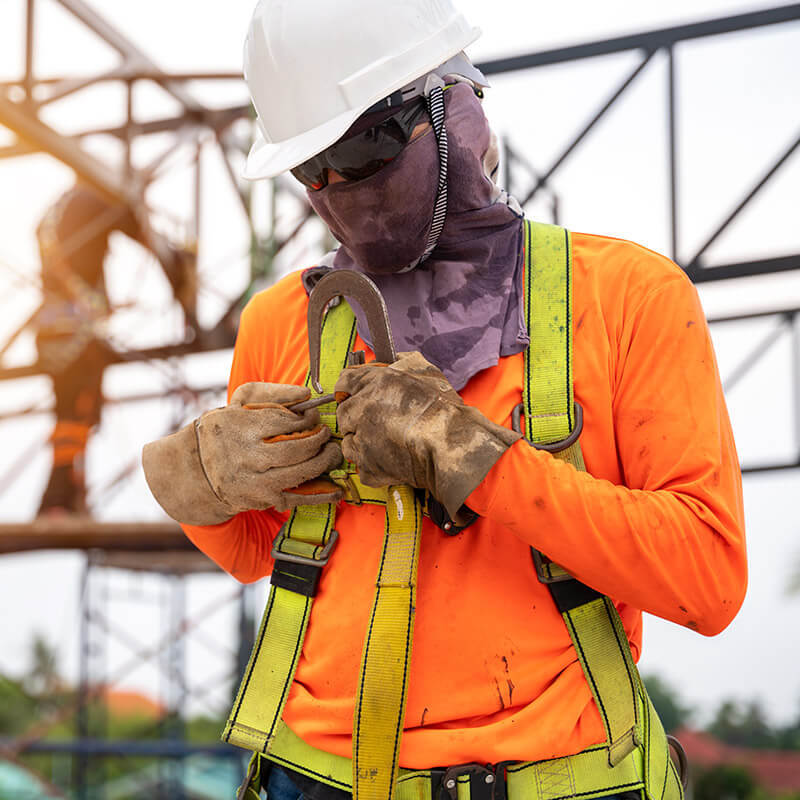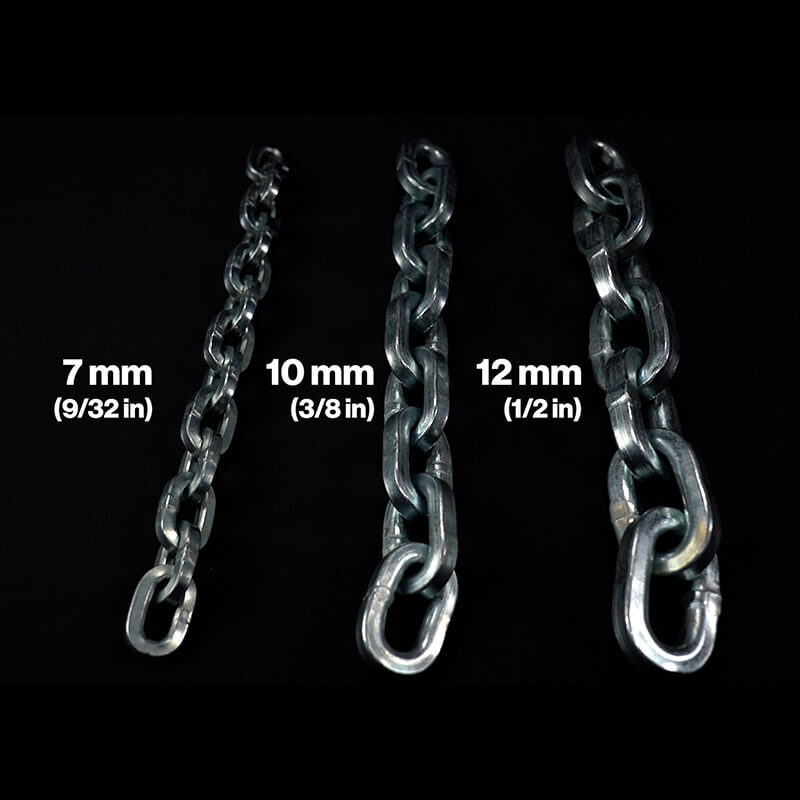What Are Synthetic Slings?
Synthetic slings are essential lifting tools used across construction, manufacturing, shipping, and automotive industries. Made from materials such as nylon, polyester, and high-performance fibers, they provide strength, flexibility, and protection for sensitive loads. Compared to wire rope or chain slings, synthetic options are lighter, easier to handle, and less likely to damage delicate or irregularly shaped items. When paired with proper inspection and use, synthetic slings are a safe, efficient, and cost-effective choice for many rigging applications.
Materials: Nylon, Polyester, and High-Performance Fibers
Nylon slings are elastic and absorb shock loads, making them ideal for dynamic lifts. Polyester slings offer low stretch and strong resistance to chemicals and abrasion, which is beneficial in harsh environments. Advanced fibers such as Dyneema®, Spectra®, and Plasma® provide exceptional strength-to-weight ratios for heavy-duty lifting applications where weight reduction and safety are critical.
Types of Synthetic Slings
Web slings are flat straps that distribute loads evenly, reducing the risk of damage. Round slings feature endless loops with a protective cover, often color-coded for quick identification of capacity per ASME B30.9. Synthetic rope slings combine strength and flexibility, allowing for easy handling and compact storage.
Key Applications
Synthetic slings are widely used in industries where load protection and worker safety are priorities. In construction, they lift precast components, steel beams, and heavy equipment. In maritime operations, they handle ship cargo and fishing nets. Automotive facilities rely on them for frequent part movement, while warehouses benefit from their ability to handle irregularly shaped products without damage. Because synthetic materials are non-conductive, they are also well suited for environments where sparks or electricity are a concern.
Safety and Compliance
Proper use of synthetic slings is governed by OSHA 1910.184 and ASME B30.9. These standards cover working load limits, inspection requirements, labeling, and removal criteria. Slings must be inspected before each use, and they must be removed from service if they show signs of cuts, abrasions, chemical burns, melting, or distorted fittings. Following these guidelines ensures safe lifting operations and extends the life of the equipment.
Why Choose Synthetic Slings Over Wire Rope or Chain
Synthetic slings offer several advantages compared to traditional lifting devices. They are lightweight, which reduces operator fatigue and injury risk. Their flexibility allows them to fit securely around irregular loads. The soft yet durable material protects fragile items from scratches or crushing. Resistance to UV, moisture, and chemicals extends their service life. Additionally, synthetic slings are cost-effective, requiring less replacement over time while improving workplace safety.
Products Available on Lifting.com
Lifting.com carries a wide range of web slings, round slings, and high-performance slings. All products are manufactured to meet or exceed ASME B30.9 standards, with clear capacity markings and durable construction. Whether your job requires heavy-duty lifting, chemical resistance, or load protection, lifting.com provides options engineered for safety and reliability. We carry the best slings from the top brands like Tuffy.
Conclusion
Synthetic slings continue to shape the future of safe lifting and rigging. By selecting the right material and type for the application and following OSHA and ASME safety standards, companies can reduce risks, protect loads, and improve efficiency. With durable, compliant products available at lifting.com, your lifting operations can stay safe, productive, and cost-effective.
FAQ: Synthetic Slings
What are synthetic slings?
Synthetic slings are lifting devices made from nylon, polyester, or high-performance fibers. They are flexible, lightweight, and designed to protect loads during lifting.
What materials are synthetic slings made of?
Nylon, polyester, and advanced fibers such as Dyneema®, Spectra®, and Plasma®. Nylon provides elasticity, polyester resists chemicals and abrasion, and high-performance fibers offer maximum strength with minimal weight.
What types of synthetic slings are available?
Common types include web slings, round slings, and synthetic rope slings. Each type serves different applications and is available in multiple capacities and lengths.
What industries use synthetic slings?
They are common in construction, maritime, automotive, manufacturing, and warehousing. Their ability to protect delicate or irregular loads makes them highly versatile.
How do synthetic slings compare to wire rope and chain slings?
Synthetic slings are lighter, easier to handle, and gentler on loads than wire rope or chain. However, they should not be used in applications involving extreme heat or sharp edges without protection.
Are there specific safety standards for synthetic slings?
Yes. OSHA 1910.184 and ASME B30.9 outline inspection, working load limits, and removal from service criteria. All synthetic slings must have permanent identification tags showing capacity, material, and manufacturer.
What should I consider when selecting a synthetic sling?
Evaluate the weight, shape, and fragility of the load, along with environmental conditions such as chemical exposure, UV light, or temperature. Always match the sling type and capacity to the application.
Where can I purchase high-quality synthetic slings?
Lifting.com offers web slings, round slings, and high-performance slings that meet or exceed ASME B30.9 requirements, ensuring safety, reliability, and durability for your lifting needs.
What Is a Kernmantle Rope Used For?
Nov 21st 2025
What Is a Fall Protection Harness?
Nov 14th 2025
What are the four components of a PFAS?
Nov 7th 2025
Is Palmer Safety OSHA Compliant?
Nov 3rd 2025
What’s the Hardest Chain to Cut?
Oct 20th 2025
What are the most common tools used in rigging?
Oct 13th 2025
What Is the Strongest Security Chain?
Oct 7th 2025
Are Pewag Chains Good?
Oct 3rd 2025
What Are DuckBill Anchors Used For?
Sep 26th 2025










